Abstract
In a study of 737 elderly hospital patients discharged to their homes in suburban areas northwest of Chicago, Illinois, 60 percent were assessed as needing help with personal care or housekeeping. Only 19 percent were referred by the hospital to community service agencies and, in the immediate postdischarge period, a large proportion of help in both personal care and housekeeping was given by relatives. Eight months after discharge, however, the proportion of care provided by relatives had decreased and the proportion of paid help had increased. The use of help at both points in time was strongly related to limitations in the basic activities of daily living (ADL) at time of hospital discharge. Many patients were unaware of available community services, and 64 percent said that no one in the hospital had talked with them about managing at home. These findings indicate the need for rethinking criteria for hospital discharge planning, more effective communication between service providers and patients, and community focus of attention on elders coming home from the hospital.
Full text
PDF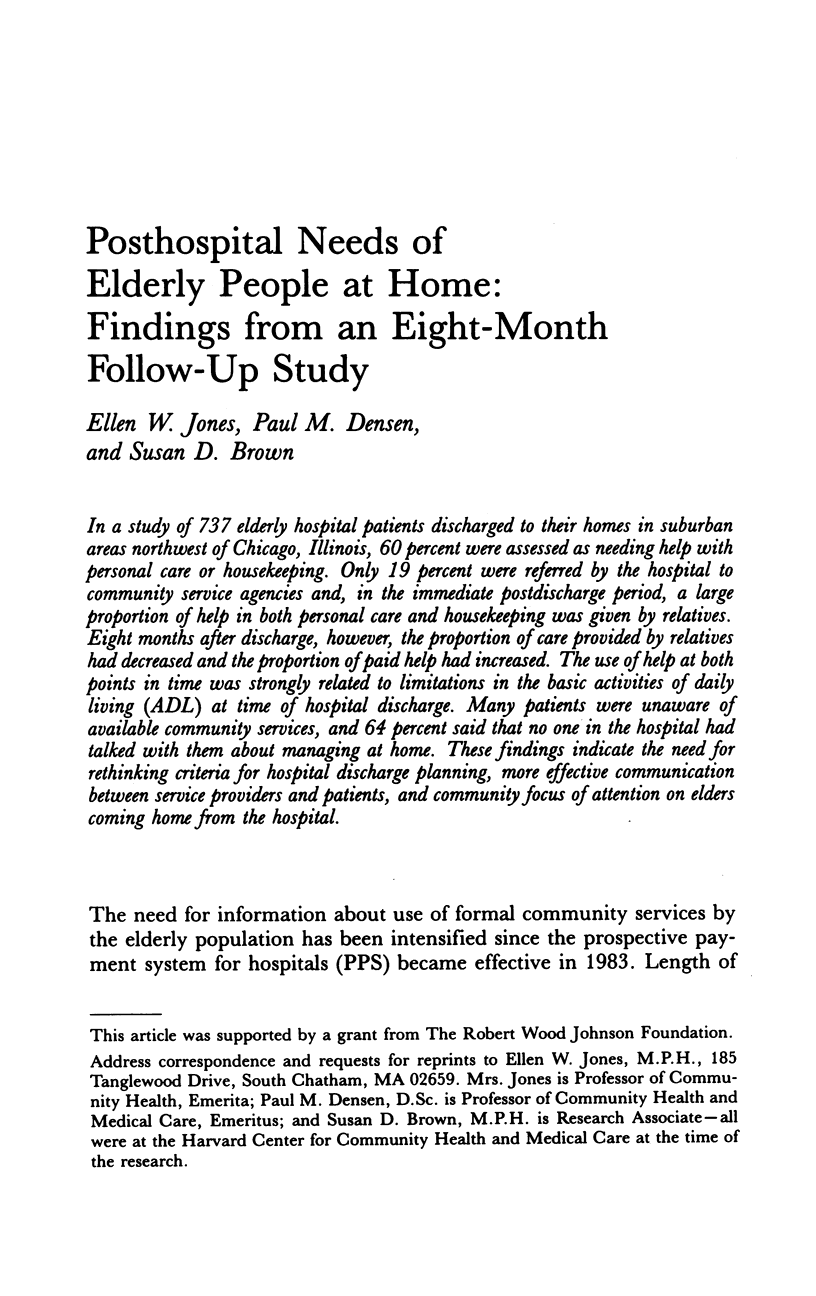
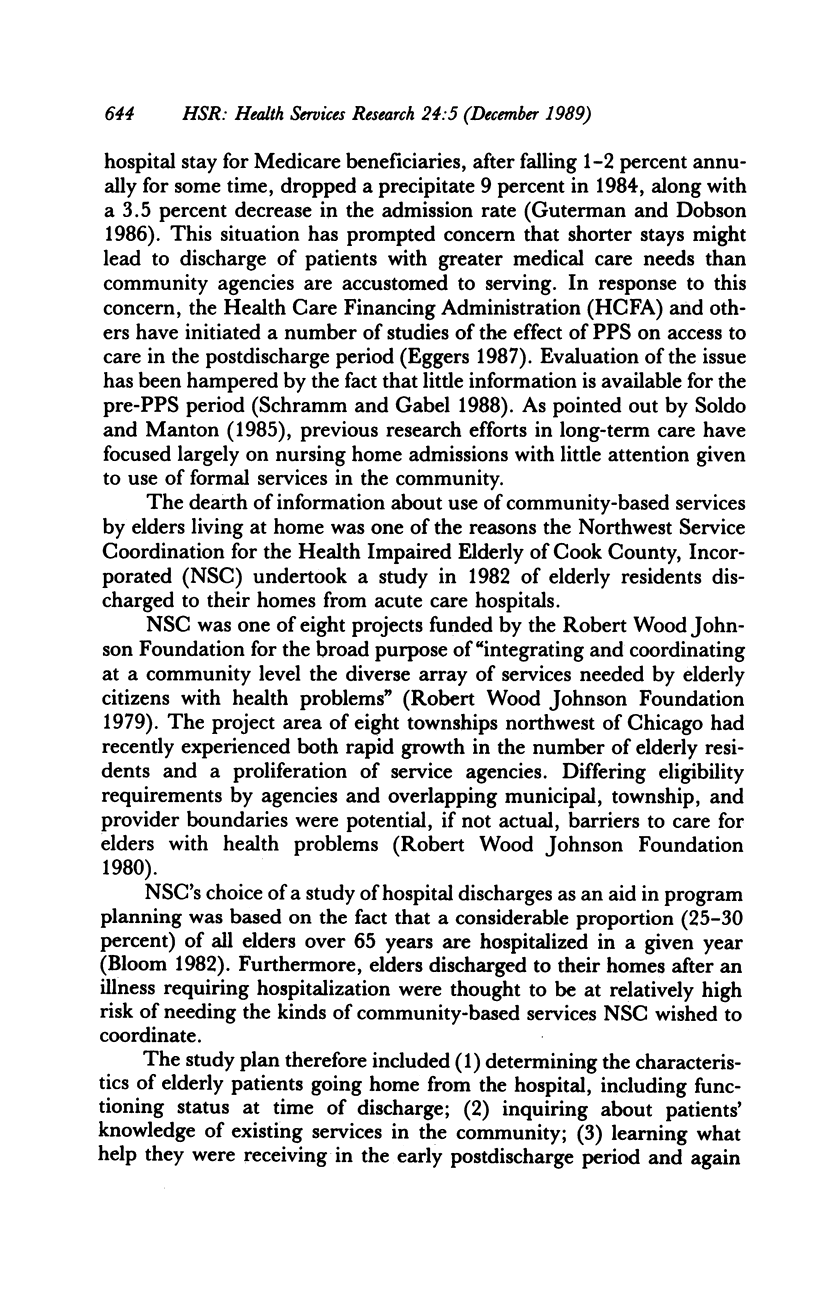
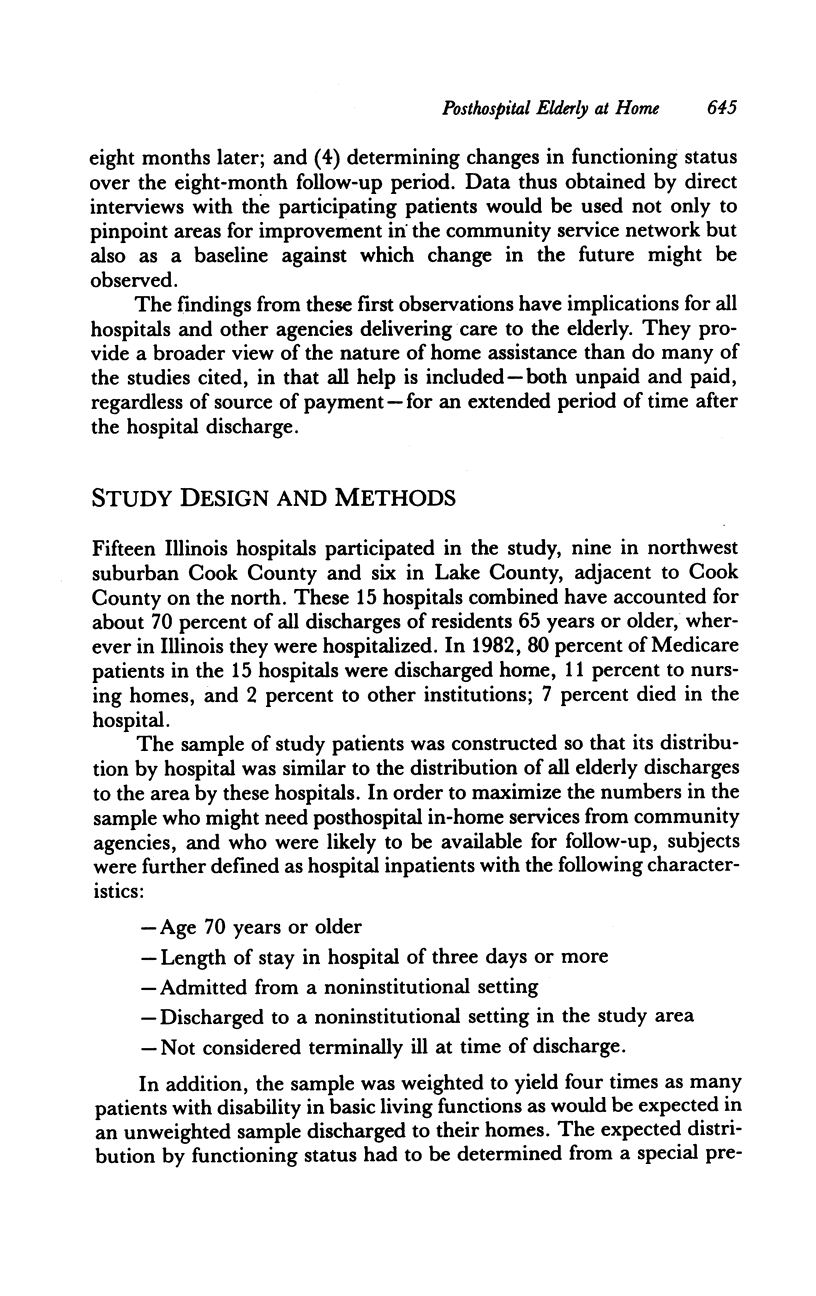
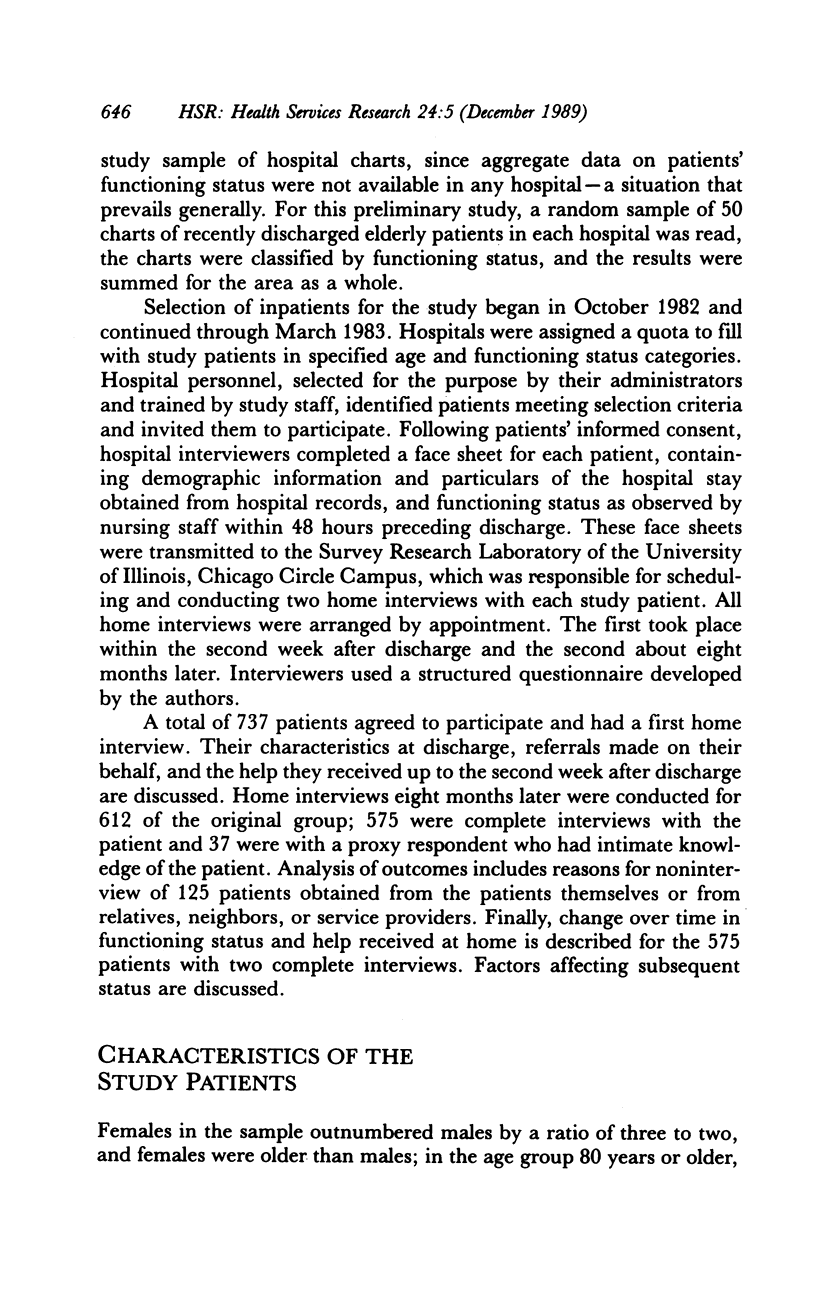
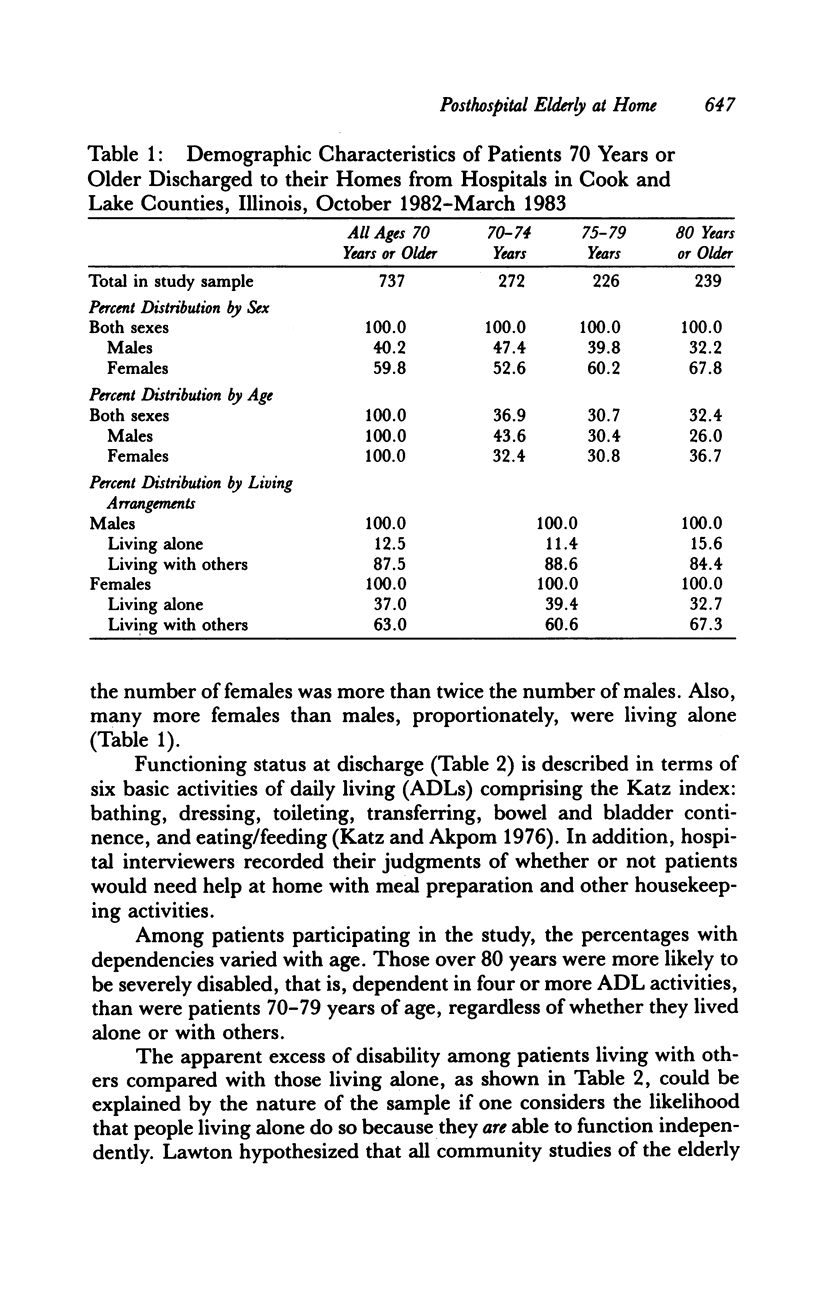
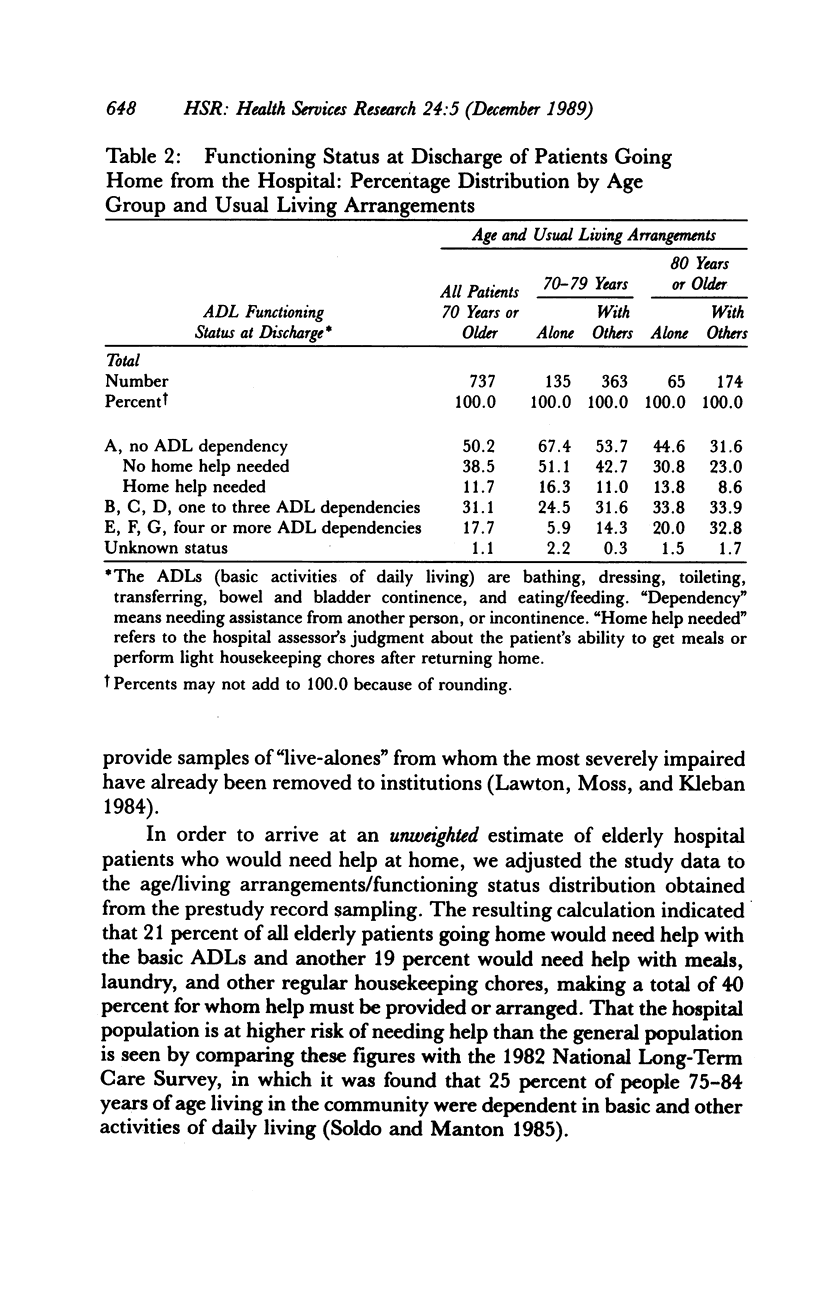
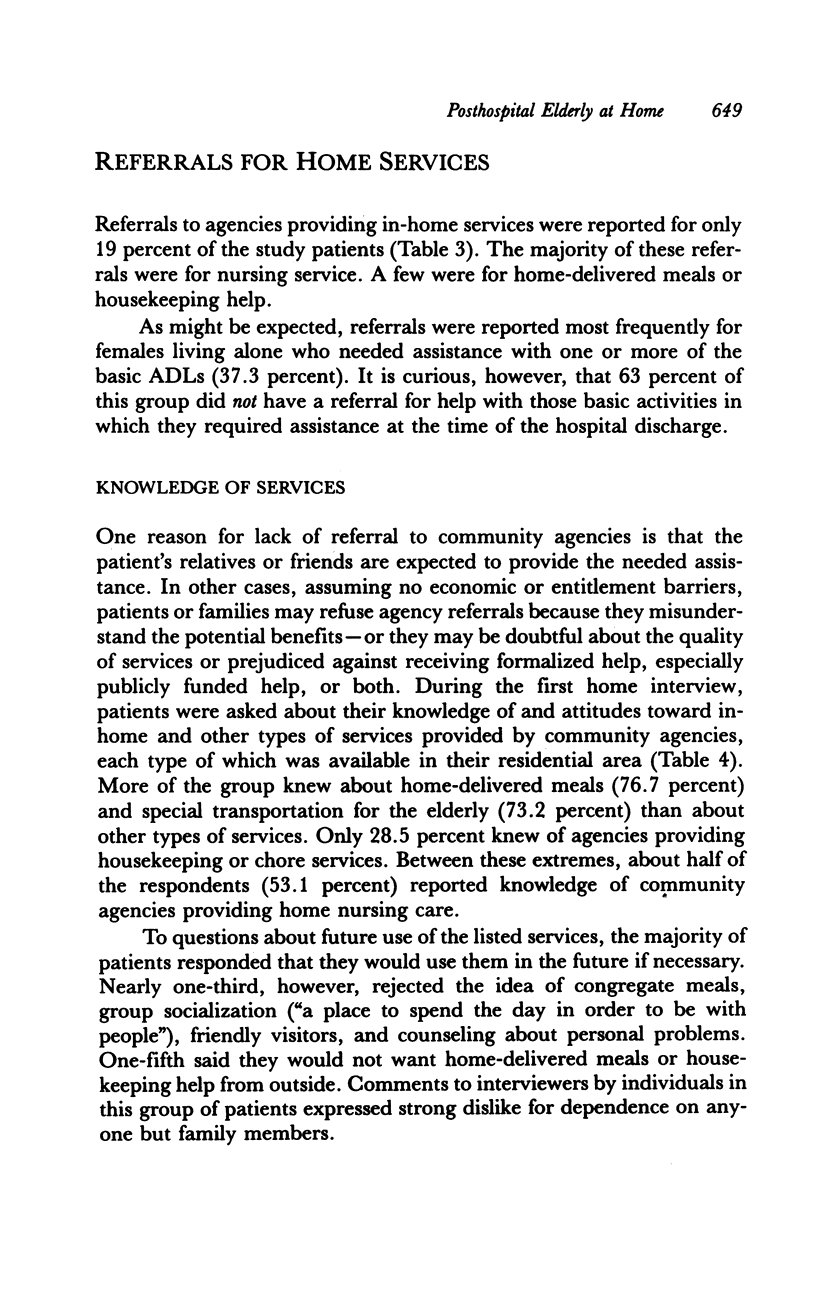
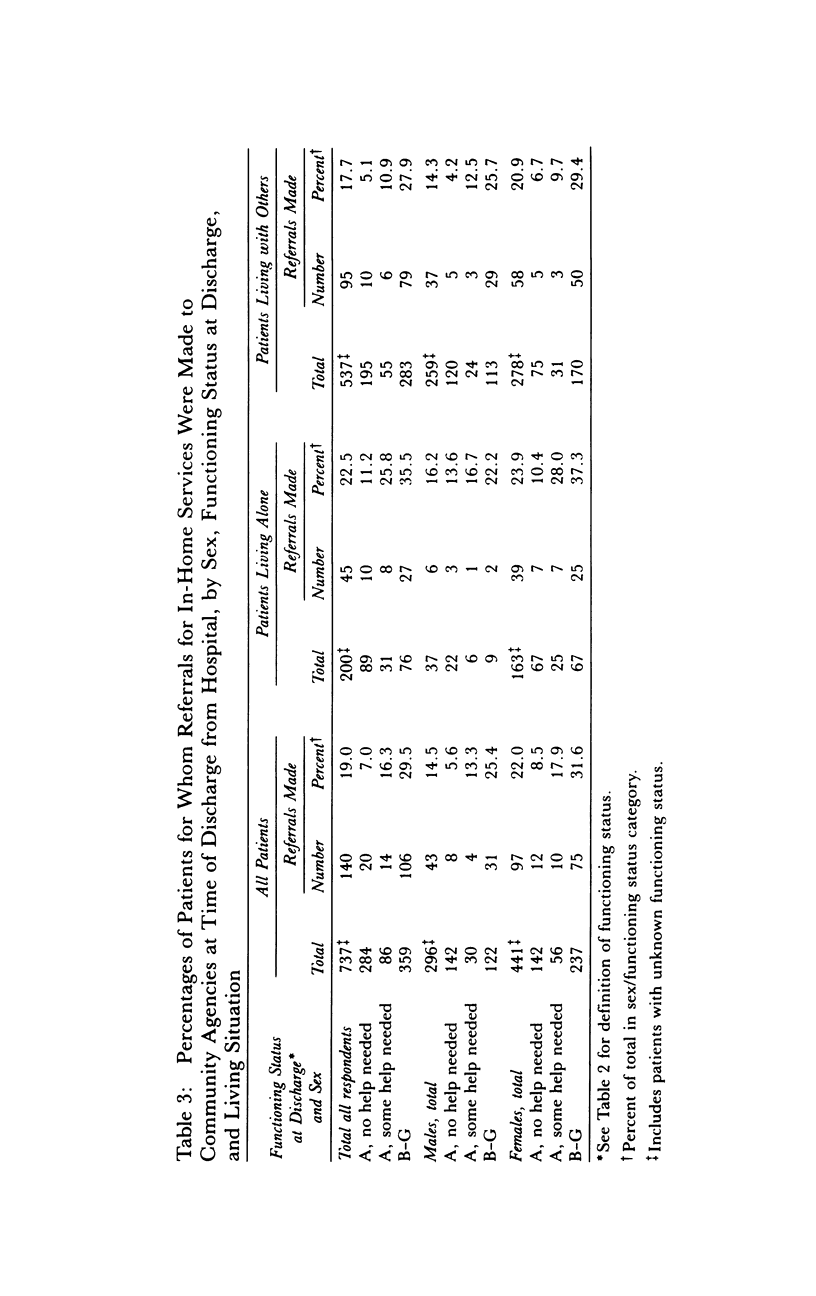
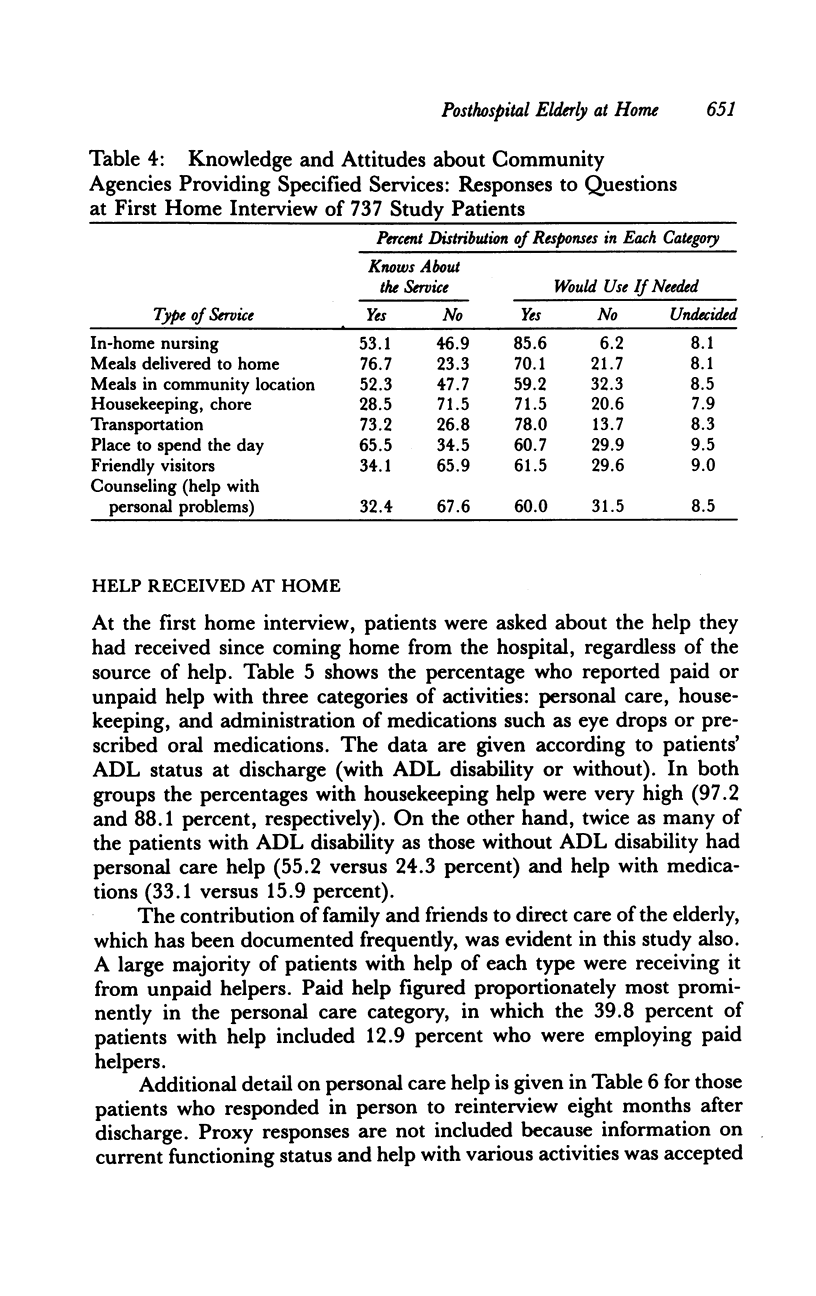
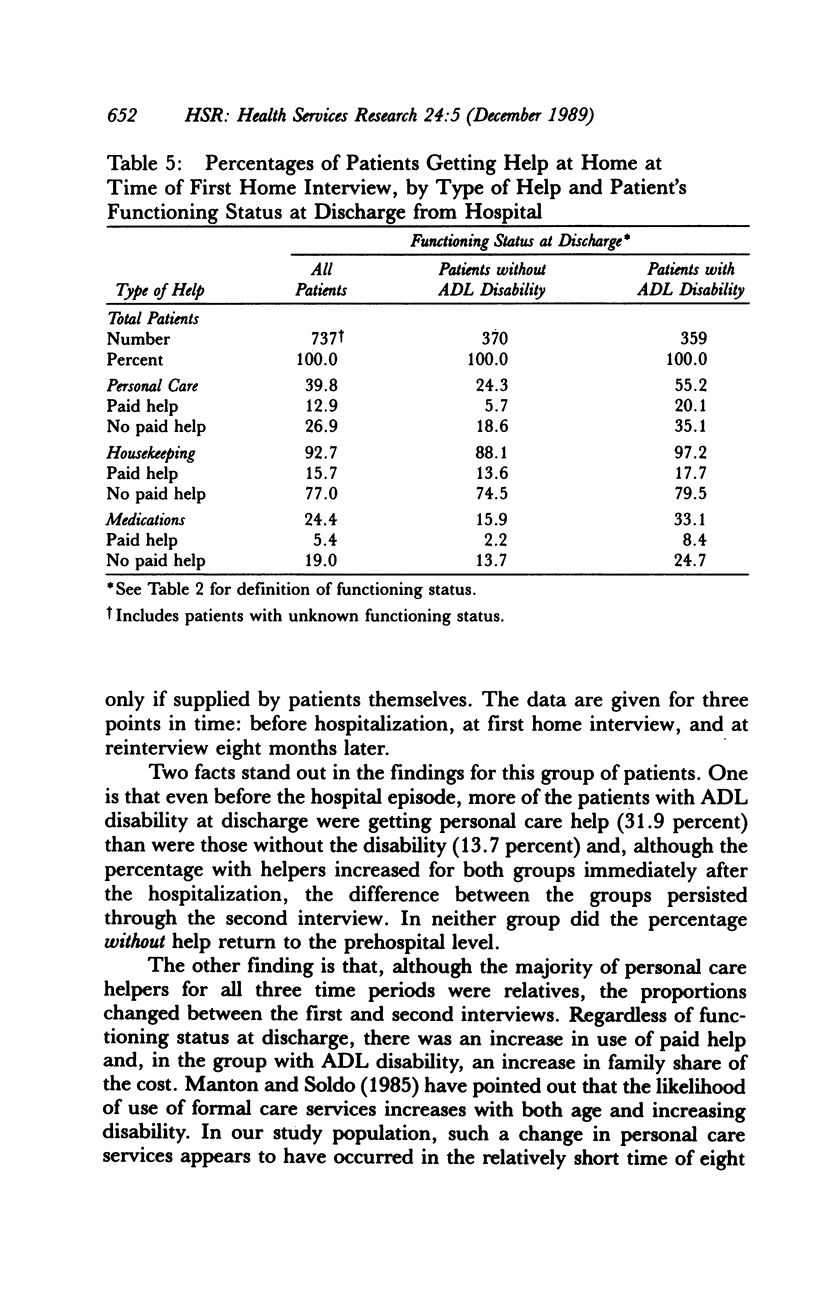
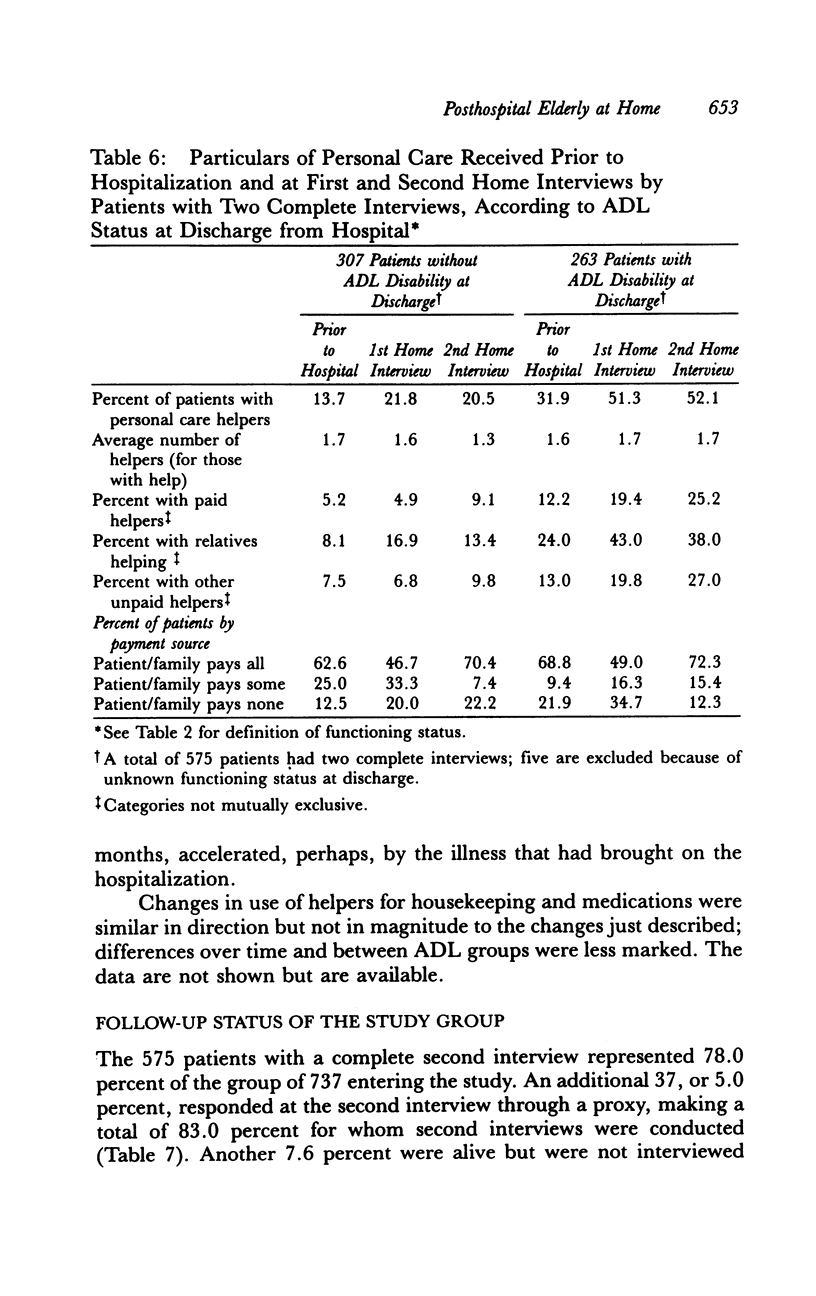
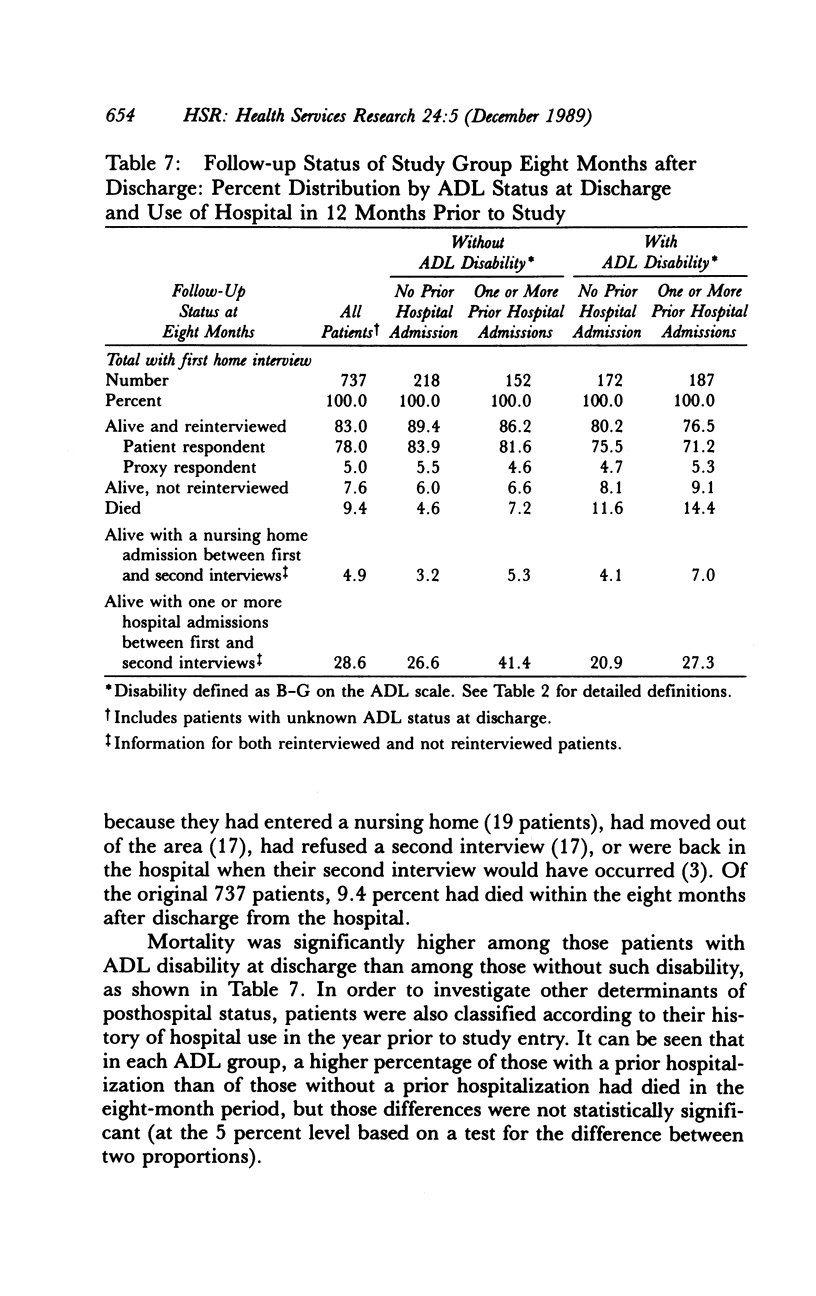
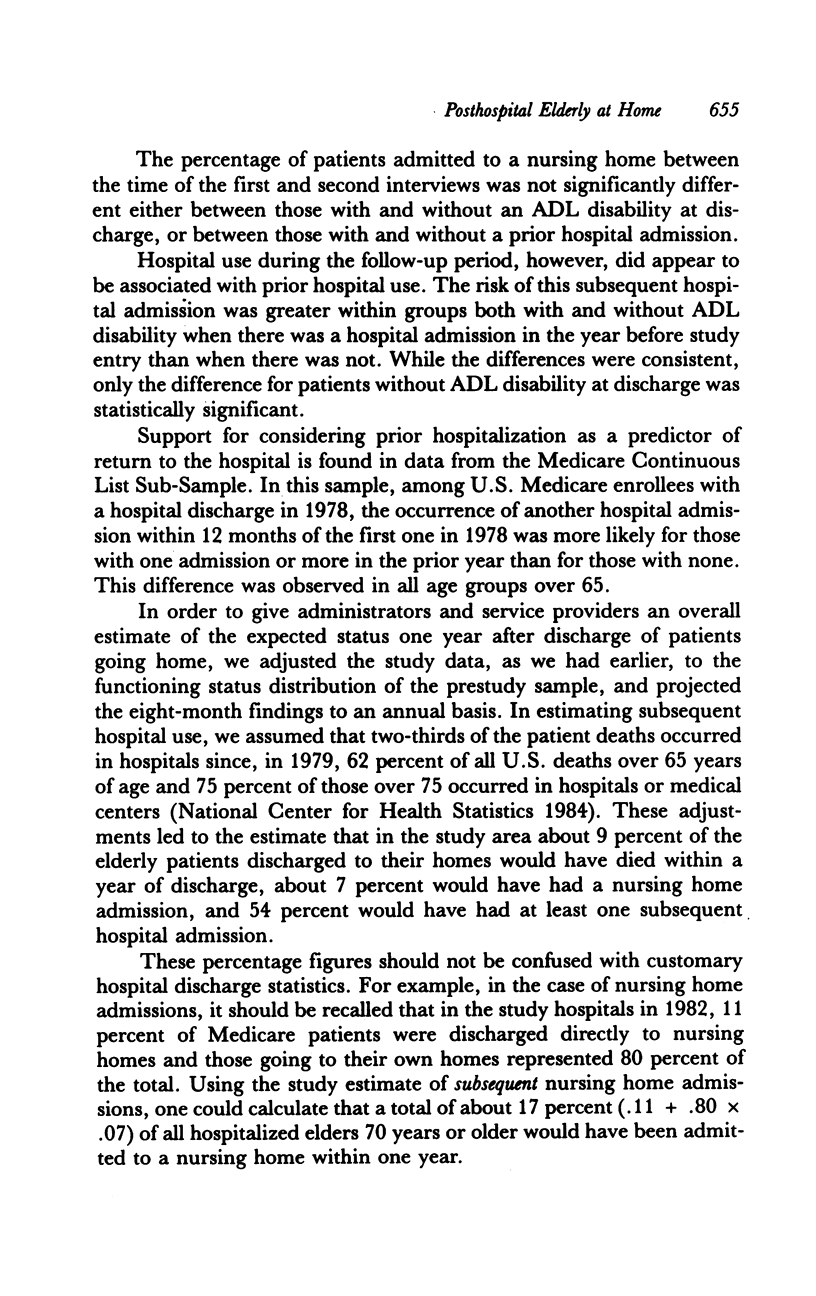
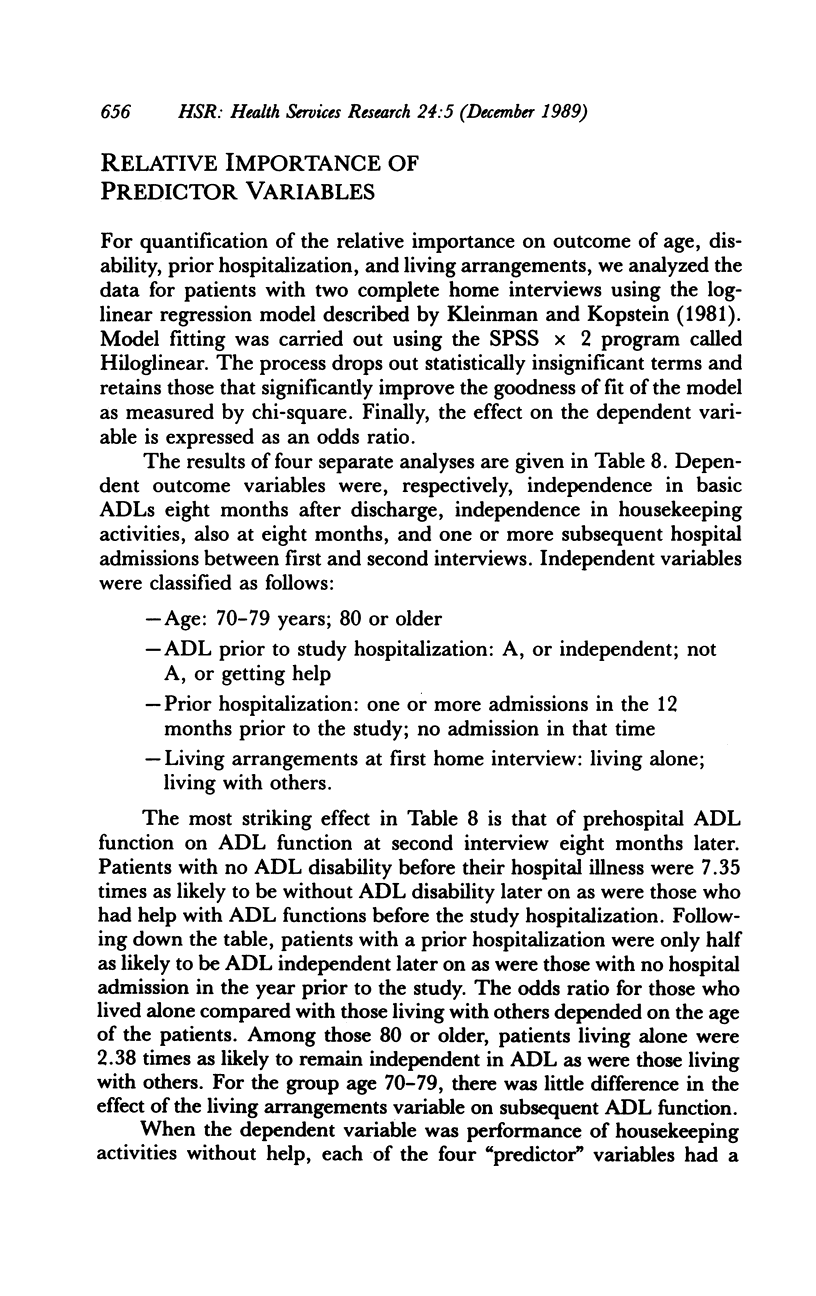
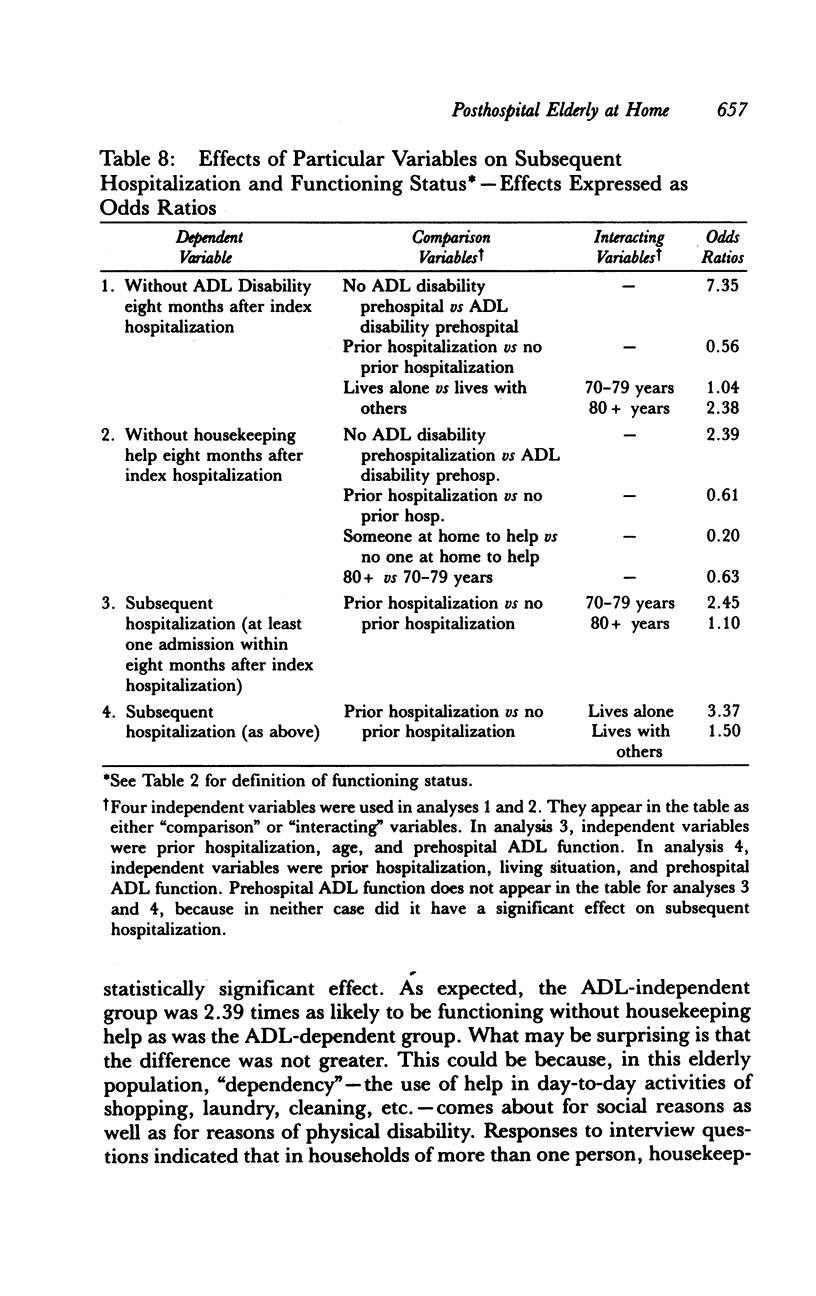
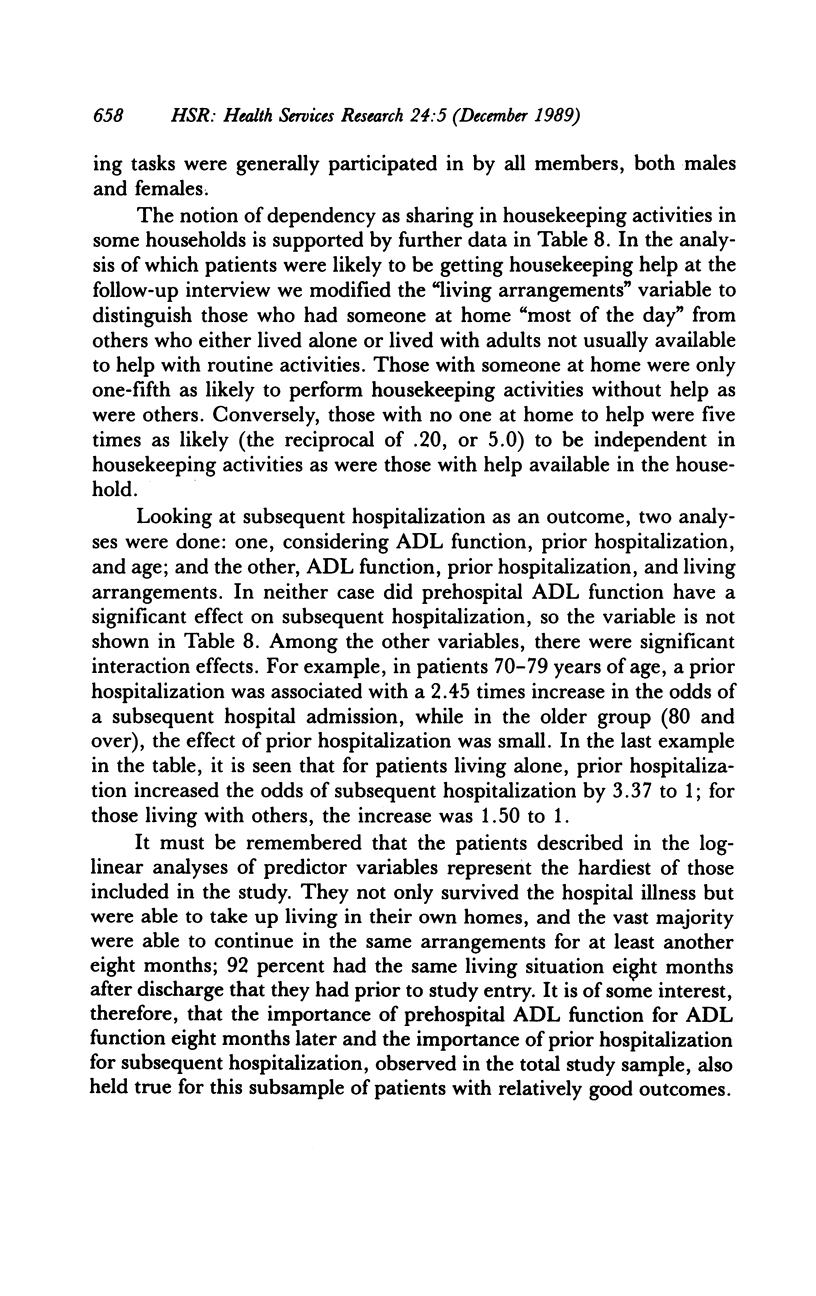
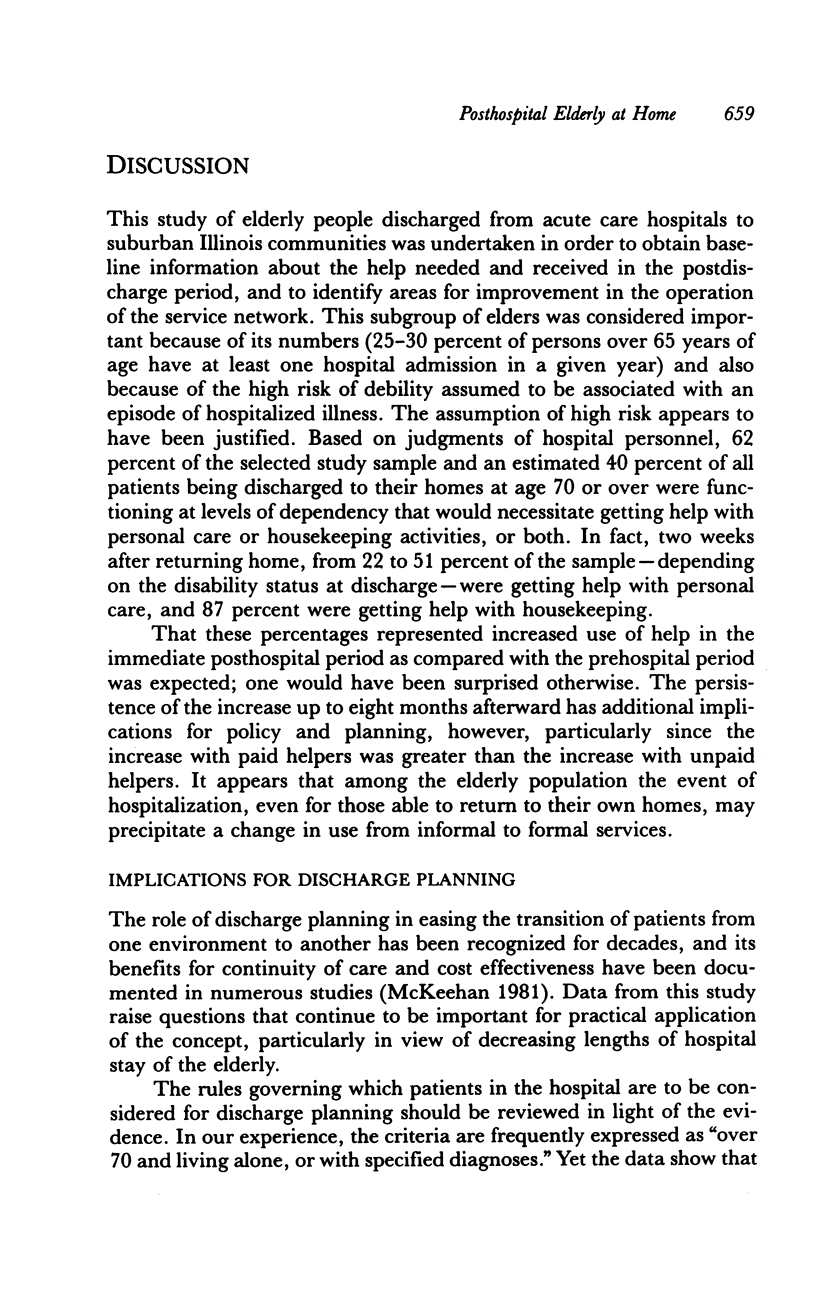
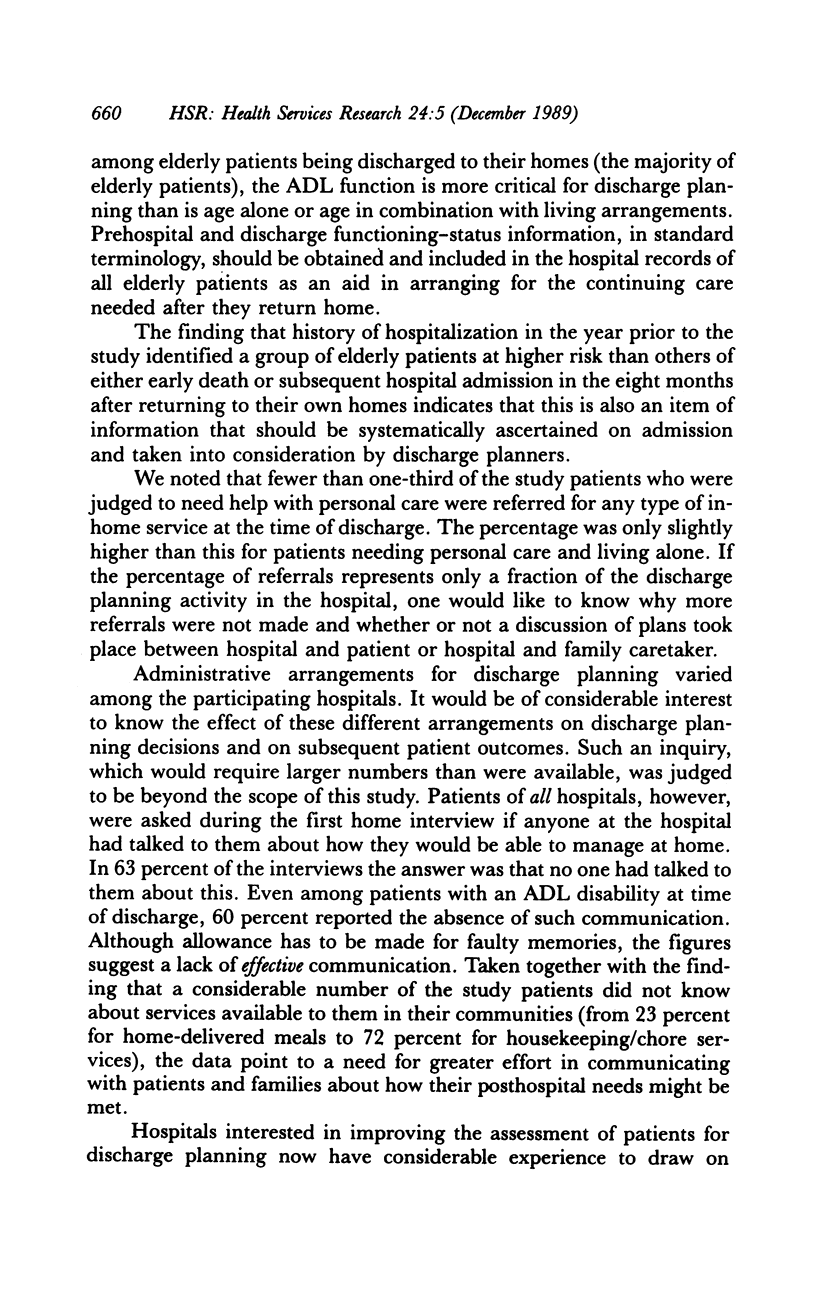
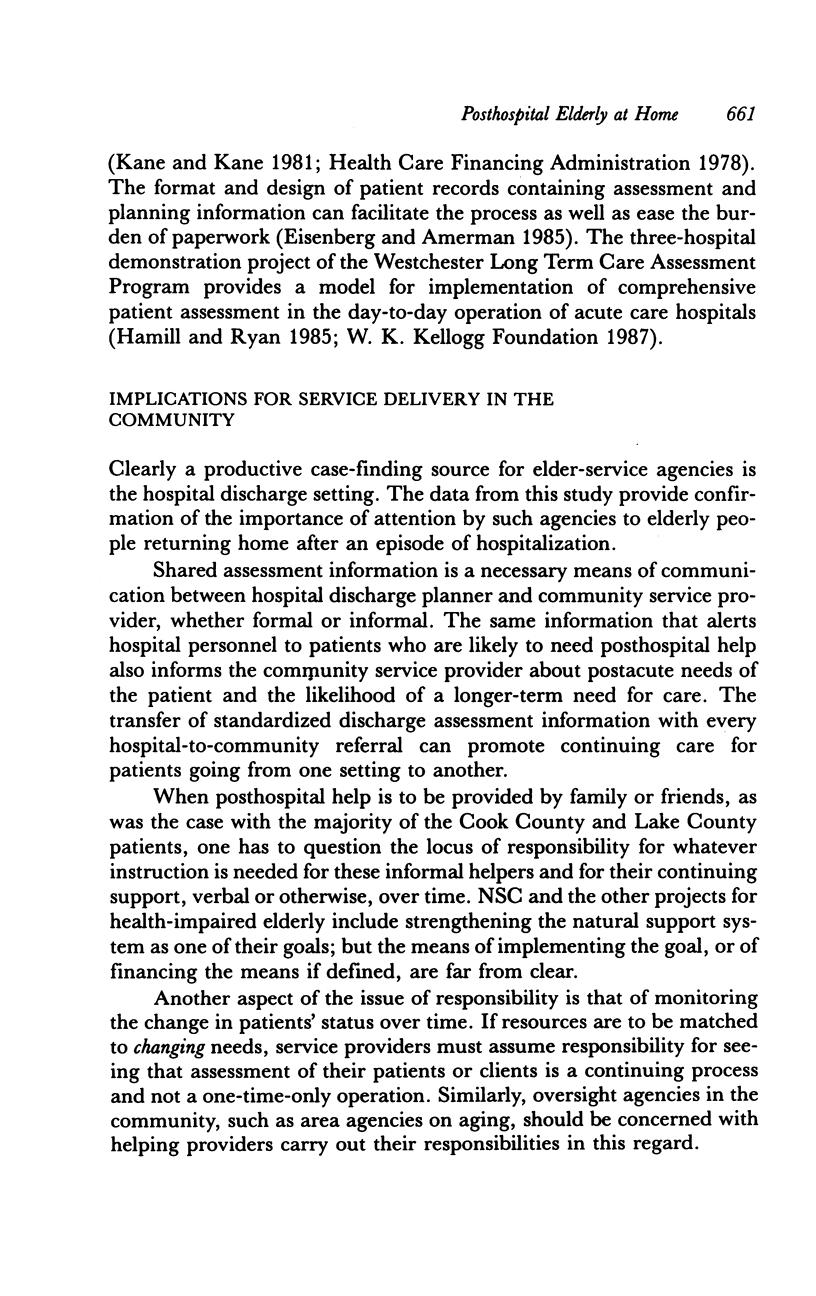
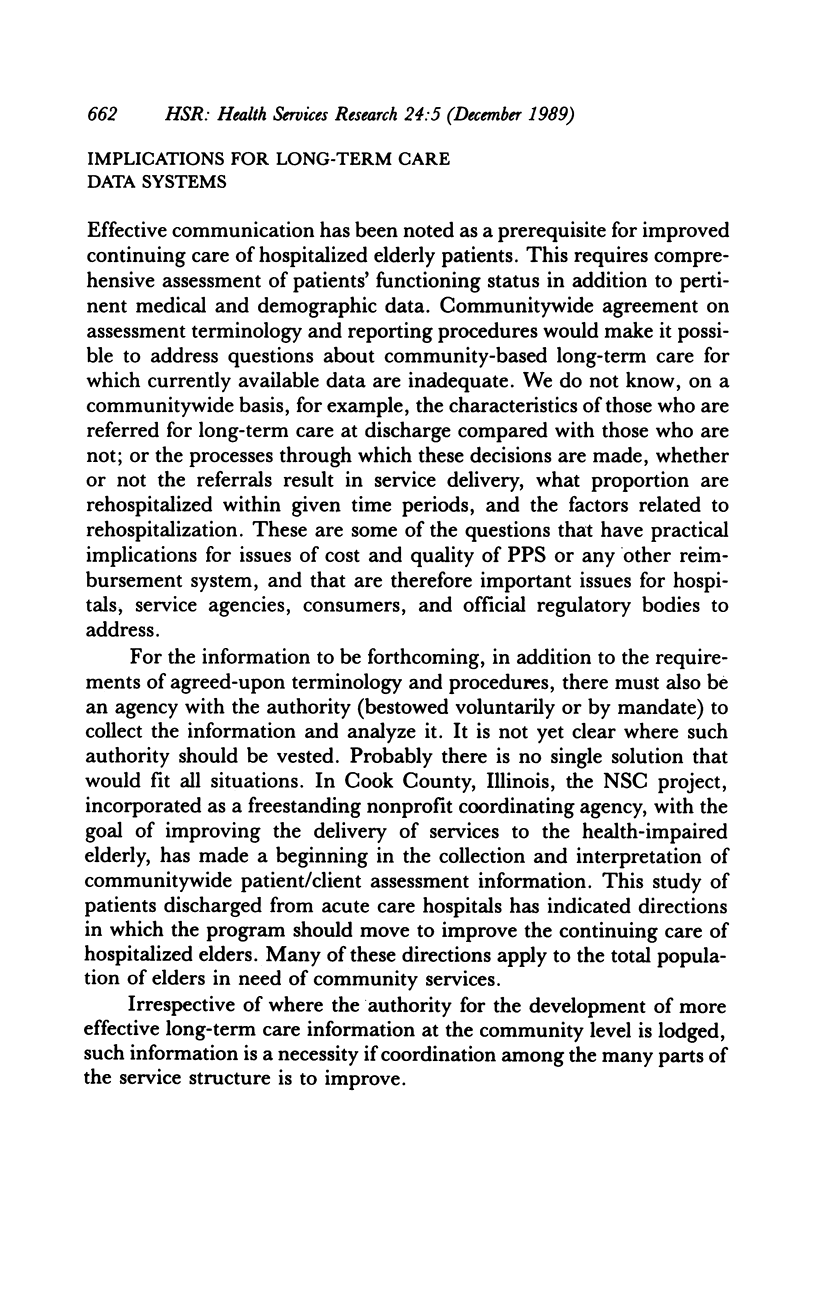
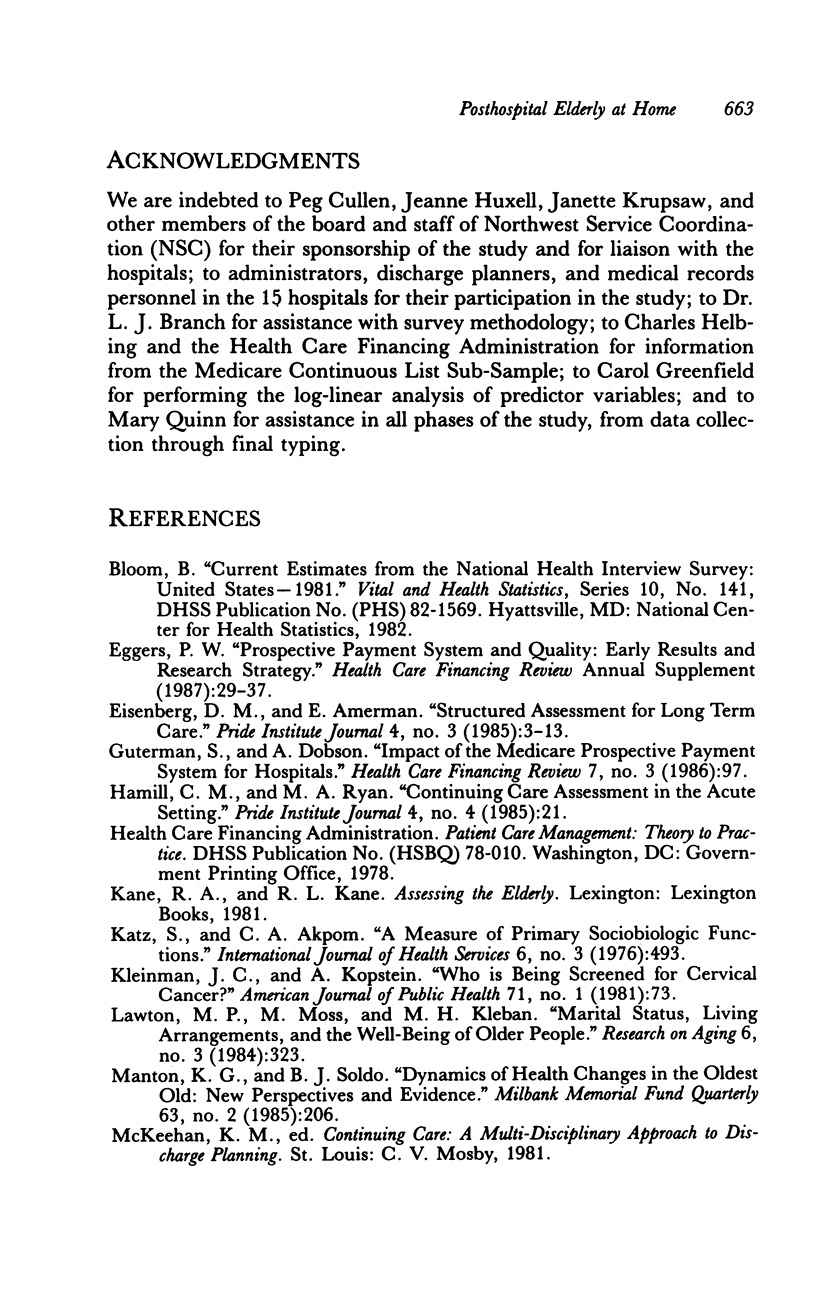
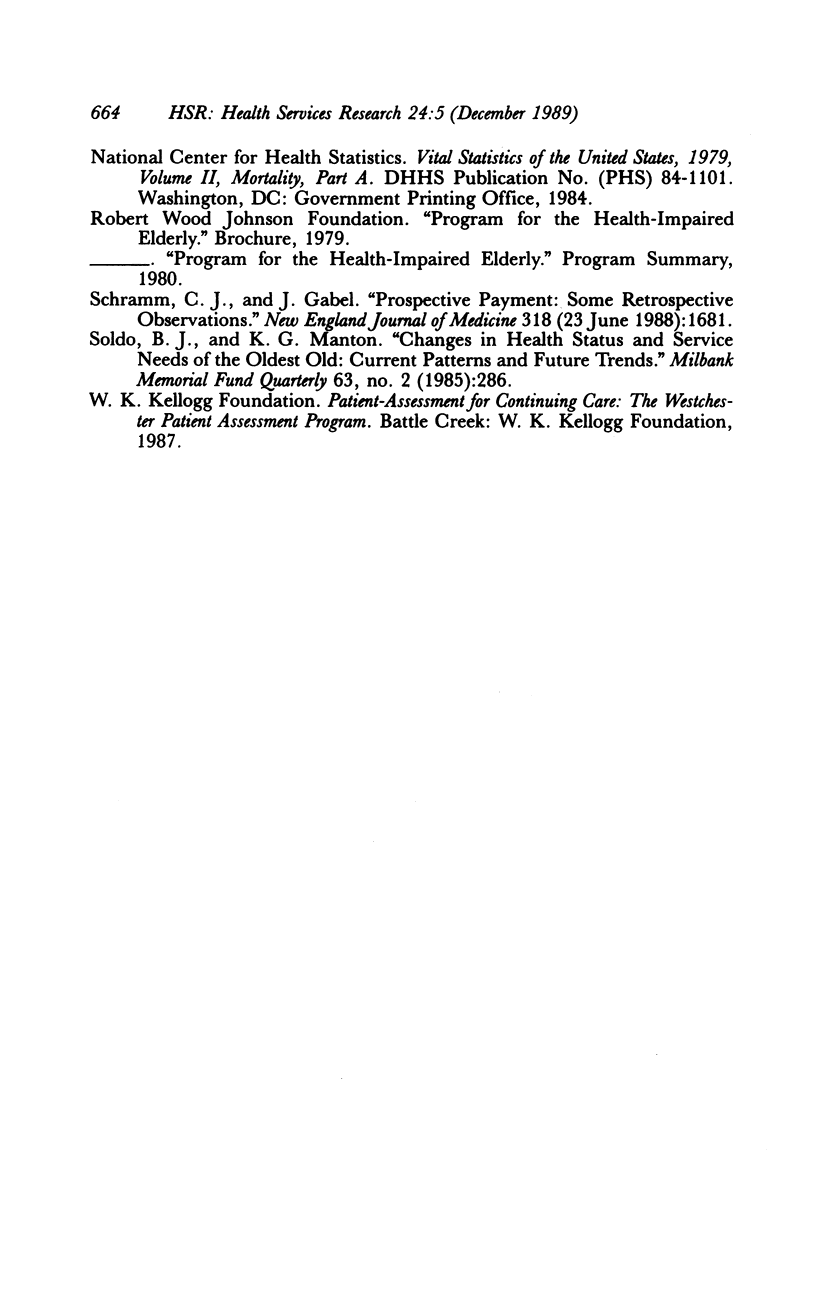
Selected References
These references are in PubMed. This may not be the complete list of references from this article.
- Eggers P. W. Prospective payment system and quality: early results and research strategy. Health Care Financ Rev. 1987 Dec;Spec No:29–37. [PMC free article] [PubMed] [Google Scholar]
- Eisenberg D. M., Amerman E. Structured assessment for long term care. Pride Inst J Long Term Home Health Care. 1985 Fall;4(4):3–13. [PubMed] [Google Scholar]
- Guterman S., Dobson A. Impact of the Medicare prospective payment system for hospitals. Health Care Financ Rev. 1986 Spring;7(3):97–114. [PMC free article] [PubMed] [Google Scholar]
- Hamill C. M., Ryan M. A. Continuing care assessment in the acute setting. Pride Inst J Long Term Home Health Care. 1985 Fall;4(4):21–25. [PubMed] [Google Scholar]
- Katz S., Akpom C. A. A measure of primary sociobiological functions. Int J Health Serv. 1976;6(3):493–508. doi: 10.2190/UURL-2RYU-WRYD-EY3K. [DOI] [PubMed] [Google Scholar]
- Kleinman J. C., Kopstein A. Who is being screened for cervical cancer? Am J Public Health. 1981 Jan;71(1):73–76. doi: 10.2105/ajph.71.1.73. [DOI] [PMC free article] [PubMed] [Google Scholar]
- Lawton M. P., Moss M., Kleban M. H. Marital status, living arrangements, and the well-being of older people. Res Aging. 1984 Sep;6(3):323–345. doi: 10.1177/0164027584006003002. [DOI] [PubMed] [Google Scholar]
- Manton K. G., Soldo B. J. Dynamics of health changes in the oldest old: new perspectives and evidence. Milbank Mem Fund Q Health Soc. 1985 Spring;63(2):206–285. [PubMed] [Google Scholar]
- Schramm C. J., Gabel J. Prospective payment. Some retrospective observations. N Engl J Med. 1988 Jun 23;318(25):1681–1683. doi: 10.1056/NEJM198806233182509. [DOI] [PubMed] [Google Scholar]
- Soldo B. J., Manton K. G. Health status and service needs of the oldest old: current patterns and future trends. Milbank Mem Fund Q Health Soc. 1985 Spring;63(2):286–319. [PubMed] [Google Scholar]


